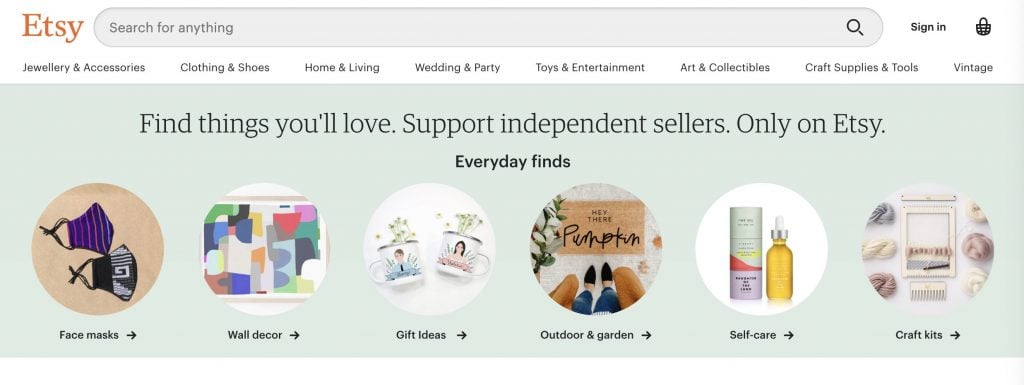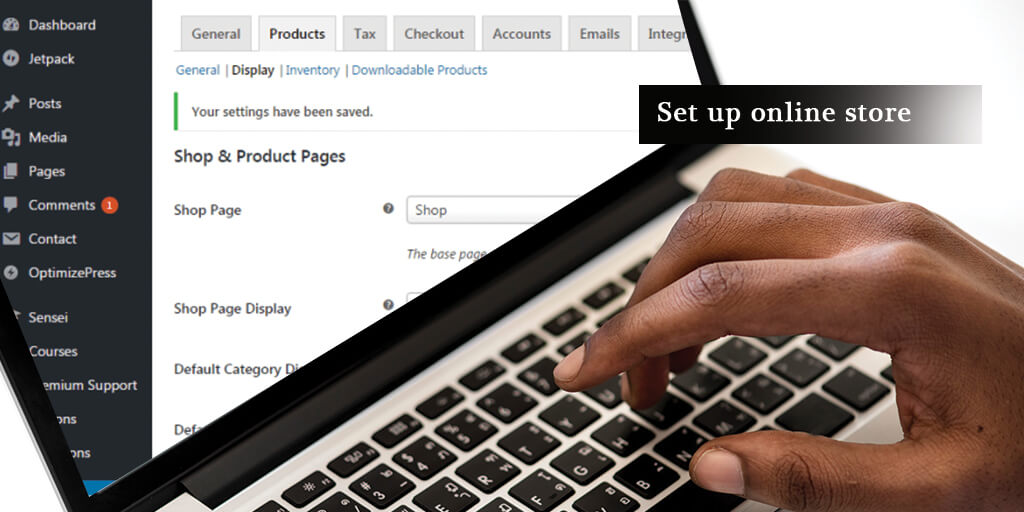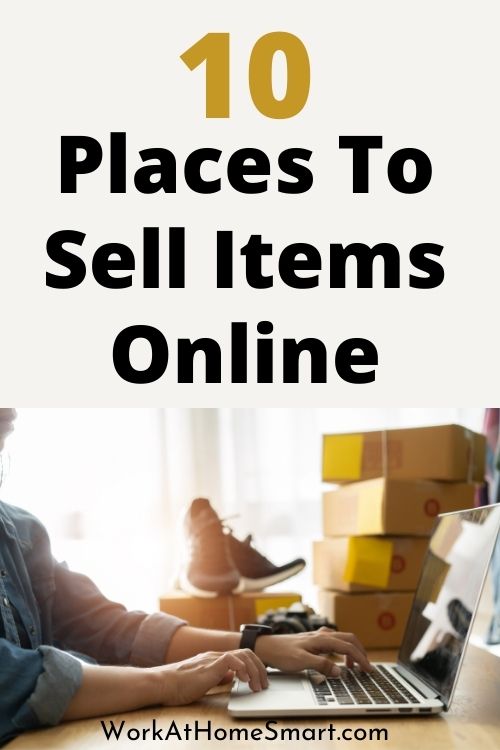How to Choose the Best Website to Sell Your Items
When it comes to selling products online, selecting the right platform is crucial for success. With so many options available, it can be overwhelming to determine what is a good website to sell things on. The right platform can make all the difference in reaching your target audience, increasing sales, and building a strong online presence.
Understanding your target audience is essential in selecting the right platform. Different platforms cater to different demographics, interests, and behaviors. For example, if you’re selling handmade or vintage items, Etsy might be the perfect fit. On the other hand, if you’re selling electronics or gadgets, Amazon or eBay might be more suitable.
Product type is another critical factor to consider. Some platforms specialize in specific product categories, such as Poshmark for gently used clothing or Ruby Lane for vintage and antique items. Others, like Shopify or WooCommerce, offer flexibility and customization options to create an online store for any type of product.
Fees and commissions can also impact your decision. Different platforms charge varying fees for listing, selling, and payment processing. Understanding these costs can help you determine which platform will provide the best return on investment for your business.
Ultimately, choosing the right platform requires careful consideration of your business goals, target audience, product type, and fees. By taking the time to research and evaluate your options, you can find the best website to sell your items and set yourself up for success in the competitive world of e-commerce.
Popular E-commerce Websites for Selling Products
When it comes to selling products online, there are several popular e-commerce websites that can help you reach a wide audience. Amazon, eBay, and Etsy are three of the most well-known platforms, each with their own unique features, benefits, and target audiences.
Amazon is one of the largest and most popular e-commerce websites in the world, with over 300 million active customers. It’s a great platform for selling a wide range of products, including electronics, books, and household items. Amazon offers a variety of tools and services to help sellers manage their inventory, fulfill orders, and provide customer service.
eBay is another popular e-commerce website that allows individuals and businesses to buy and sell new and used goods. With over 183 million active users, eBay is a great platform for selling products such as electronics, fashion items, and collectibles. eBay offers a range of tools and services to help sellers manage their listings, track their sales, and provide customer service.
Etsy is a niche e-commerce website that specializes in handmade, vintage, and unique items. With over 90 million active users, Etsy is a great platform for selling products such as jewelry, clothing, and home decor. Etsy offers a range of tools and services to help sellers manage their shops, list their products, and provide customer service.
Each of these platforms has its own strengths and weaknesses, and the best one for you will depend on your specific needs and goals. For example, if you’re selling handmade or unique items, Etsy may be the best choice. If you’re selling a wide range of products, Amazon or eBay may be a better fit.
Ultimately, the key to success on any of these platforms is to understand your target audience, create high-quality listings, and provide excellent customer service. By doing so, you can increase your sales, build your brand, and establish a successful online business.
The Benefits of Specialized Marketplaces
When it comes to selling products online, specialized marketplaces can be a great option for reaching a targeted audience. These platforms cater to specific niches and attract dedicated customers who are looking for unique or hard-to-find items.
Poshmark, for example, is a popular platform for selling gently used clothing and accessories. With over 5 million active users, Poshmark provides a dedicated marketplace for fashion enthusiasts to buy and sell gently used items. The platform’s social features, such as the ability to share listings and follow other users, make it easy for sellers to connect with potential buyers and build a community around their brand.
Ruby Lane is another example of a specialized marketplace, this time for vintage and antique items. With over 1 million active users, Ruby Lane provides a platform for sellers to showcase their unique and rare items to a dedicated audience. The platform’s focus on vintage and antique items makes it an ideal choice for sellers who specialize in these areas.
Specialized marketplaces like Poshmark and Ruby Lane offer several benefits to sellers. For one, they provide a targeted audience that is already interested in the types of products being sold. This can lead to higher conversion rates and more sales. Additionally, these platforms often have lower fees and commissions compared to larger e-commerce websites, which can help sellers keep more of their profits.
Another benefit of specialized marketplaces is the ability to build a community around your brand. Platforms like Poshmark and Ruby Lane allow sellers to connect with potential buyers and build relationships with other sellers in their niche. This can lead to more sales and a stronger online presence.
When considering what is a good website to sell things on, specialized marketplaces like Poshmark and Ruby Lane are definitely worth considering. These platforms offer a unique combination of targeted audiences, lower fees, and community-building features that can help sellers succeed in the competitive world of e-commerce.
Creating Your Own Online Store with Shopify or WooCommerce
When it comes to selling products online, having a standalone store can be a great way to establish your brand and reach customers directly. Two popular platforms for creating an online store are Shopify and WooCommerce. Both platforms offer flexibility and customization options, making it easy to create a store that meets your needs.
Shopify is a comprehensive e-commerce platform that allows you to create an online store and sell products directly to customers. With Shopify, you can choose from a variety of templates and customize your store’s design and layout. You can also add products, manage inventory, and process payments all in one place.
WooCommerce, on the other hand, is a popular e-commerce plugin for WordPress. It allows you to turn your WordPress site into a fully functional online store, complete with product management, payment processing, and shipping integration. WooCommerce offers a range of extensions and plugins to help you customize your store and add features like payment gateways and shipping integrations.
Having a standalone store with Shopify or WooCommerce offers several benefits. For one, you have complete control over the design and layout of your store, allowing you to create a unique and personalized shopping experience for your customers. You also have more flexibility when it comes to payment processing and shipping options, which can help you save money and streamline your operations.
Another benefit of having a standalone store is the ability to build a strong brand identity. With a custom-designed store, you can create a consistent look and feel that reflects your brand’s values and personality. This can help you establish trust with your customers and build a loyal following.
When considering what is a good website to sell things on, having a standalone store with Shopify or WooCommerce is definitely worth considering. Both platforms offer flexibility, customization options, and a range of features to help you succeed in the competitive world of e-commerce.
Facebook Marketplace and Other Social Media Selling Options
Facebook Marketplace is a relatively new platform that allows users to buy and sell items within their local communities. With over 800 million monthly active users, Facebook Marketplace offers a vast potential customer base for sellers. The platform is free to use, and sellers can list their items in various categories, including electronics, clothing, and home goods.
Other social media platforms, such as Instagram and Pinterest, also offer opportunities for selling products online. Instagram, for example, has introduced features like Instagram Shopping and Instagram Checkout, which allow businesses to tag products directly in their posts and stories. Pinterest, on the other hand, has introduced features like Shopping Ads and Product Pins, which allow businesses to promote their products and reach potential customers.
When considering what is a good website to sell things on, social media platforms like Facebook Marketplace, Instagram, and Pinterest are definitely worth considering. These platforms offer a unique combination of features, including free listings, vast customer bases, and innovative advertising options.
However, it’s essential to note that social media platforms have their limitations when it comes to selling products online. For example, Facebook Marketplace has strict policies and guidelines for buying and selling, and sellers must comply with these rules to avoid having their accounts suspended or terminated. Instagram and Pinterest also have their own set of rules and guidelines for businesses, and sellers must ensure they comply with these to avoid any issues.
Despite these limitations, social media platforms can be a great way to reach potential customers and drive sales. By leveraging the features and advertising options available on these platforms, businesses can increase their online presence and reach a wider audience.
Ultimately, the key to success on social media platforms is to understand your target audience and create content that resonates with them. By doing so, you can build a loyal following and drive sales for your business.
Fees, Commissions, and Payment Terms: What to Expect
When selling products online, it’s essential to understand the fees, commissions, and payment terms associated with various selling platforms. These costs can impact profit margins and cash flow, so it’s crucial to factor them into your pricing strategy.
PayPal, for example, charges a flat fee of 2.9% + $0.30 per transaction for domestic sales. Stripe, on the other hand, charges a flat fee of 2.9% + $0.30 per transaction for online credit card transactions. Square charges a flat fee of 2.6% + $0.10 per transaction for in-person credit card transactions.
Amazon, eBay, and Etsy also charge various fees for selling on their platforms. Amazon charges a selling plan fee of $0.99 per sale, plus a referral fee ranging from 8% to 15% depending on the product category. eBay charges an insertion fee of $0.30 per listing, plus a final value fee ranging from 8% to 12.5% depending on the product category. Etsy charges a listing fee of $0.20 per item, plus a transaction fee of 3.5% on sales.
When considering what is a good website to sell things on, it’s essential to factor in these fees and commissions to ensure you’re making a profit. You should also consider the payment terms associated with each platform, including the time it takes to receive payment and any potential holds or reserves on your funds.
By understanding the fees, commissions, and payment terms associated with various selling platforms, you can make informed decisions about which platforms to use and how to price your products for maximum profitability.
Ultimately, the key to success when selling products online is to find a platform that aligns with your business goals and target audience. By considering the fees, commissions, and payment terms associated with each platform, you can make informed decisions and maximize your profits.
Security and Trust: Ensuring a Safe Online Selling Experience
When selling products online, security and trust are essential components of a successful transaction. Buyers need to feel confident that their personal and financial information is protected, and sellers need to ensure that their products are delivered safely and efficiently.
To ensure a safe online selling experience, it’s essential to choose a platform that prioritizes security and trust. Look for platforms that have robust security measures in place, such as encryption, secure payment processing, and two-factor authentication.
PayPal, for example, is a popular payment processor that offers a range of security features, including encryption, secure payment processing, and buyer protection. Stripe and Square also offer robust security measures, including encryption and secure payment processing.
Amazon, eBay, and Etsy also prioritize security and trust, with features such as secure payment processing, buyer protection, and seller verification. These platforms also have strict policies and guidelines in place to prevent scams, counterfeiting, and data breaches.
When considering what is a good website to sell things on, it’s essential to factor in the security and trust features of each platform. By choosing a platform that prioritizes security and trust, you can ensure a safe online selling experience for both you and your buyers.
Ultimately, the key to success when selling products online is to build trust with your buyers. By choosing a platform that prioritizes security and trust, you can establish a reputation as a reliable and trustworthy seller, which can lead to increased sales and customer loyalty.
Conclusion: Finding the Best Website to Sell Your Products
Choosing the right platform to sell your products online is a crucial decision that can impact your sales and overall success. With so many options available, it can be overwhelming to determine what is a good website to sell things on.
By considering the factors discussed in this article, such as target audience, product type, fees, and security, you can make an informed decision about which platform is best for your business. Whether you choose to sell on a popular e-commerce website like Amazon or eBay, or create your own online store with Shopify or WooCommerce, the key is to find a platform that aligns with your business goals and target audience.
Remember, there is no one-size-fits-all solution when it comes to selling products online. What works for one business may not work for another. By experimenting with different platforms and finding the best fit for your online selling needs, you can increase your sales, build your brand, and establish a successful online business.
Ultimately, the best website to sell things on is one that provides a safe and secure online selling experience, offers flexibility and customization options, and aligns with your business goals and target audience. By choosing the right platform, you can set yourself up for success and achieve your online selling goals.







